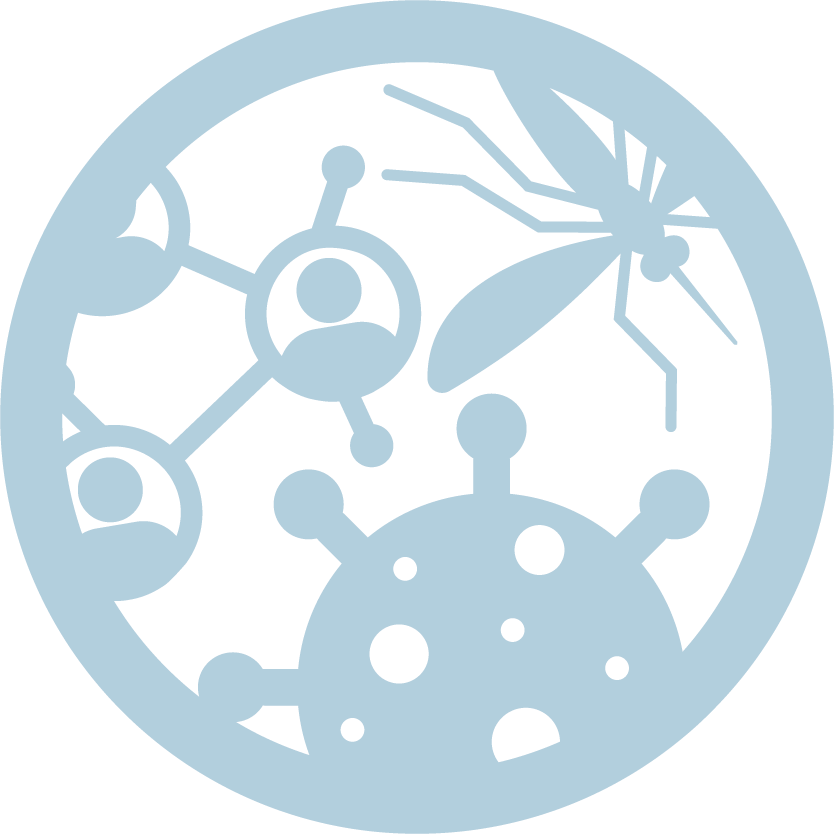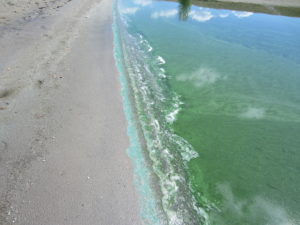What are harmful cyanobacterial blooms?
Harmful cyanobacterial blooms, also called harmful algal blooms, are caused by cyanobacteria, also called blue-green algae, that quickly multiply in some water sources. Some, but not all, blooms may become visible and can look like foam, scum, or mats. The blooms can be blue, bright green, brown, or red. Sometimes the blooms can look like paint floating on the water’s surface.
Why are these blooms harmful?
HCBs can make toxins, called cyanotoxins, which can make people, their pets, and other animals sick. People or animals that have direct contact with the contaminated water by swimming, breathing in aerosols, or swallowing the contaminated water can experience symptoms. These symptoms can vary depending on how they were exposed, how long they were exposed, and the particular toxin involved.
What are the symptoms?
People or animals who are directly exposed to cyanotoxins can experience:
- Skin irritation
- Eye irritation
- Nose irritation
- Throat irritation
- Respiratory irritation
Pets and animals may experience more severe symptoms such as:
- Excessive salivation
- Vomiting
- Fatigue
- Staggered walking
- Difficulty breathing
- Convulsions
- Liver failure
- Death
Death in animals can occur within hours to days of the exposure
How can I protect myself, my family, and my pets from HCBs?
Follow the recommendations below to protect yourself, your family, and your pets from HCBs:
- Don’t swim, water ski, or boat in areas where the water is discolored or where you see foam, scum, or mats of algae on the water’s surface.
- Do not allow children or pets to play in or drink scummy water.
- If you do swim in water that might contain harmful cyanobacteria, rinse off with fresh water as soon as possible afterward.
- Don’t let pets or livestock swim in or drink from areas where the water is discolored or where you see foam, scum, or mats of cyanobacteria on the water’s surface.
- If pets, especially dogs, swim in scummy water, rinse them off immediately. Do not let them lick the cyanobacteria off their fur.
- Report any “musty” smell or taste in your drinking water to your local water utility.
- Follow any water-body closures or advisories announced by authorities.
- View this document for more information about animal exposures
How can I help prevent HCBs from forming?
HCBs form in warm, slow-moving waters that are rich in nutrients from sources such as fertilizer runoff or septic tank overflows. To help reduce cyanobacteria from forming:
- Use only the recommended amounts of fertilizers on your yard and gardens to reduce the amount that runs off into the environment
- Properly maintain your household septic system
- Maintain a buffer of natural vegetation around ponds and lakes to filter incoming water



